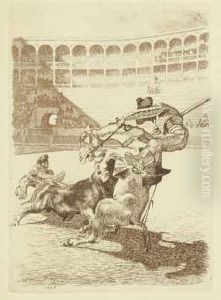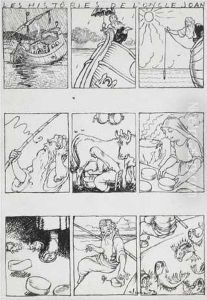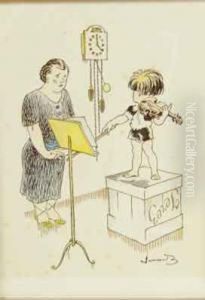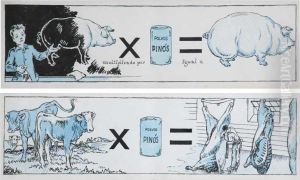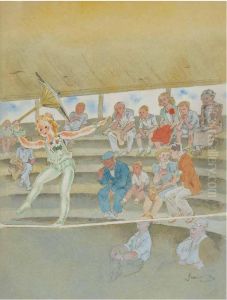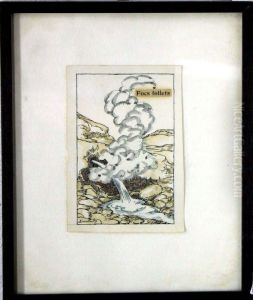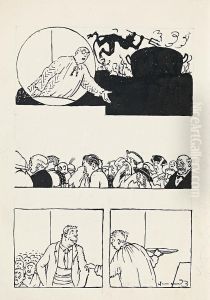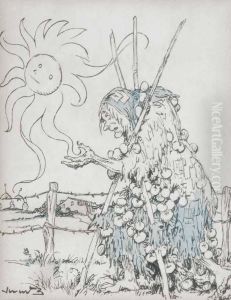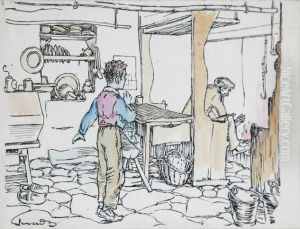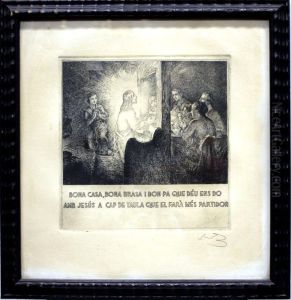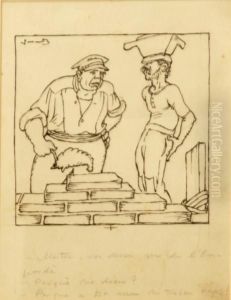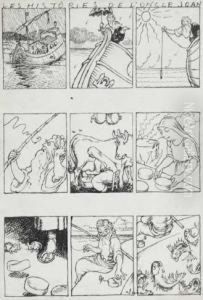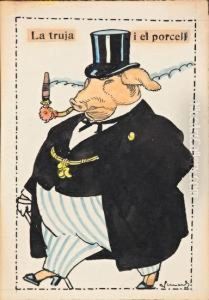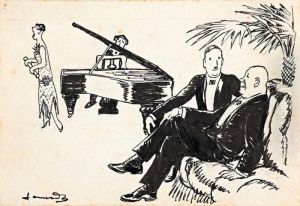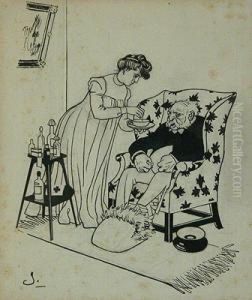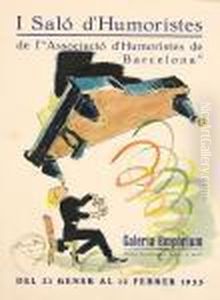Joan Junceda Paintings
Joan Junceda, full name Joan Garcia Junceda, was a prominent Catalan illustrator and cartoonist born in Girona, Spain, in 1881. He is considered one of the most important figures in Catalan graphic humor and illustration during the early 20th century. Junceda's work was characterized by its humor, critical spirit, and social commentary, which he conveyed through a variety of media, including newspapers, magazines, and books.
Junceda began his artistic career at a young age, showing an early talent for drawing and illustration. He moved to Barcelona, where he furthered his education and began to establish himself as a professional illustrator. Throughout his career, Junceda contributed to numerous publications, both in Catalonia and across Spain. His illustrations were not limited to humorous cartoons; he also created book illustrations, advertisements, and posters, showcasing his versatility as an artist.
His work reflects the cultural and social milieu of his time, often incorporating elements of Catalan identity and politics, which was particularly significant during periods of political turmoil and cultural renaissance in Catalonia. Junceda was admired for his ability to blend satire with genuine affection for his subjects, a trait that endeared him to his audience and made his work highly influential among his contemporaries and future generations of artists.
Junceda's contributions to the field of illustration were recognized with several awards and honors throughout his lifetime. Despite facing the challenges of the Spanish Civil War and the subsequent Francoist regime, which imposed strict censorship and repressive measures against Catalan culture, Junceda continued to work and adapt his artistic expression.
He passed away in Barcelona in 1948, leaving behind a rich legacy of artistic work that continues to be celebrated for its creativity, wit, and insight into Catalan society. Today, Joan Junceda is remembered not only for his contributions to Catalan art but also for his role in the broader context of Spanish and European cultural history. His work remains an important part of Catalonia's artistic heritage, studied and admired by both scholars and the general public.
